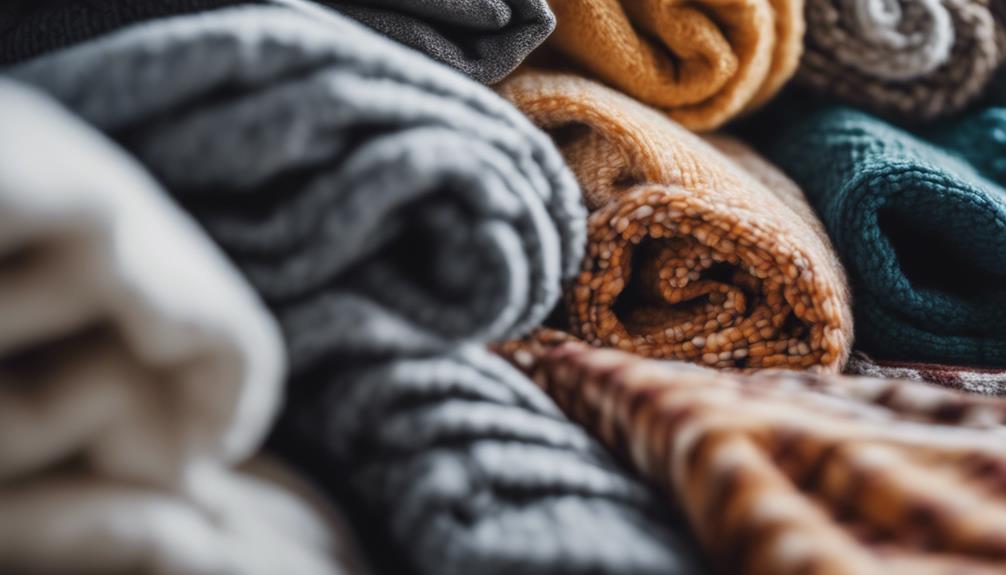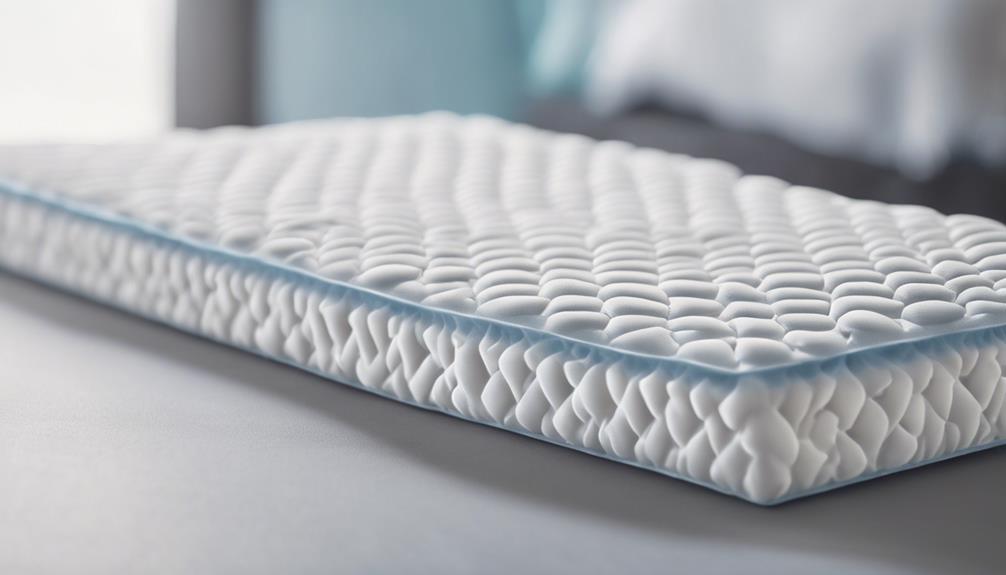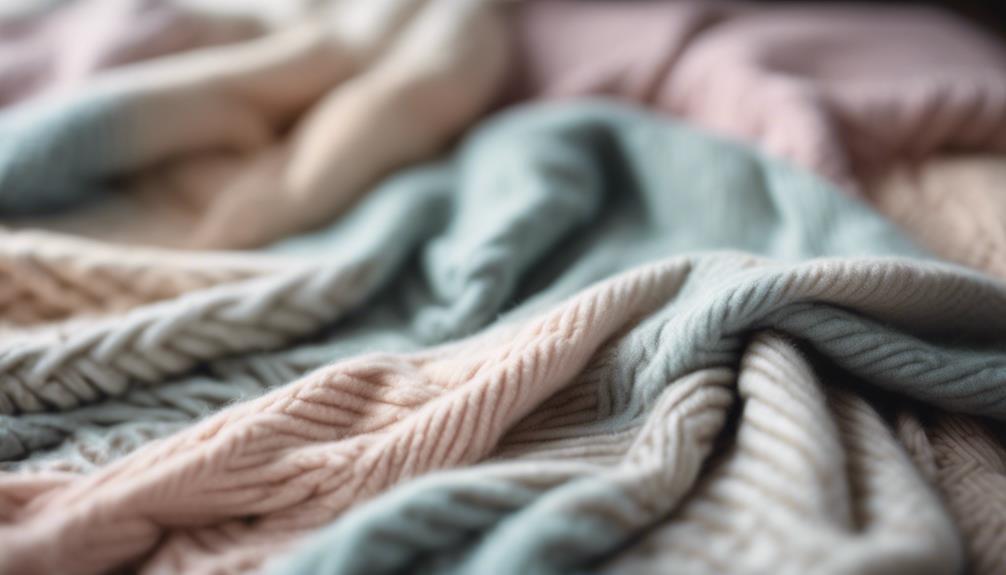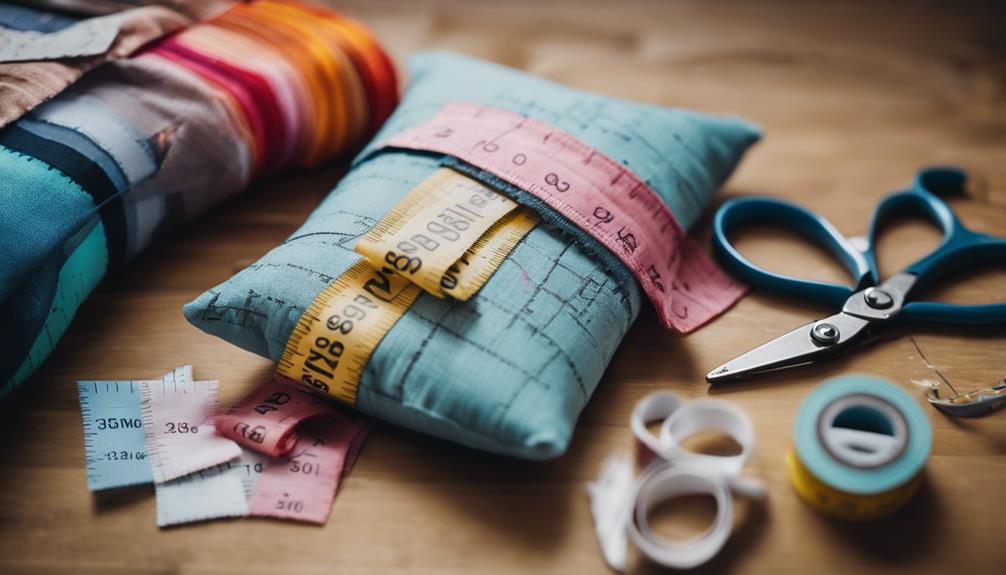When it comes to choosing the perfect material for throw blankets, cotton stands out for its exceptional softness and breathability, making it ideal for various climates. Wool, on the other hand, offers exceptional warmth, versatility, and excellent insulation, effectively regulating body temperature. If you are looking for luxury and lightweight warmth, cashmere is a top choice with its indulgent feel and vibrant colors. Linen’s moisture-wicking properties and easy care make it suitable for summer use, becoming softer with washing. Lastly, alpaca blankets provide a silky warmth from the long-haired alpacas, being gentle on the skin. Each material offers unique benefits that are worth considering further.
Key Takeaways
- Cotton: Exceptionally soft, breathable, and durable for versatile use and effective temperature regulation.
- Wool: Exceptionally warm, insulating, and moisture-absorbent, regulating body temperature effectively.
- Cashmere: Luxuriously soft, lightweight, and rich in color, offering an indulgent feel.
- Linen: Moisture-wicking, summer-friendly, easy-care material that gets softer over time.
- Alpaca: Silky warmth, gentle on the skin, and insulating, crafted from long-haired alpacas for cozy comfort.
Cotton: Softness and Breathability
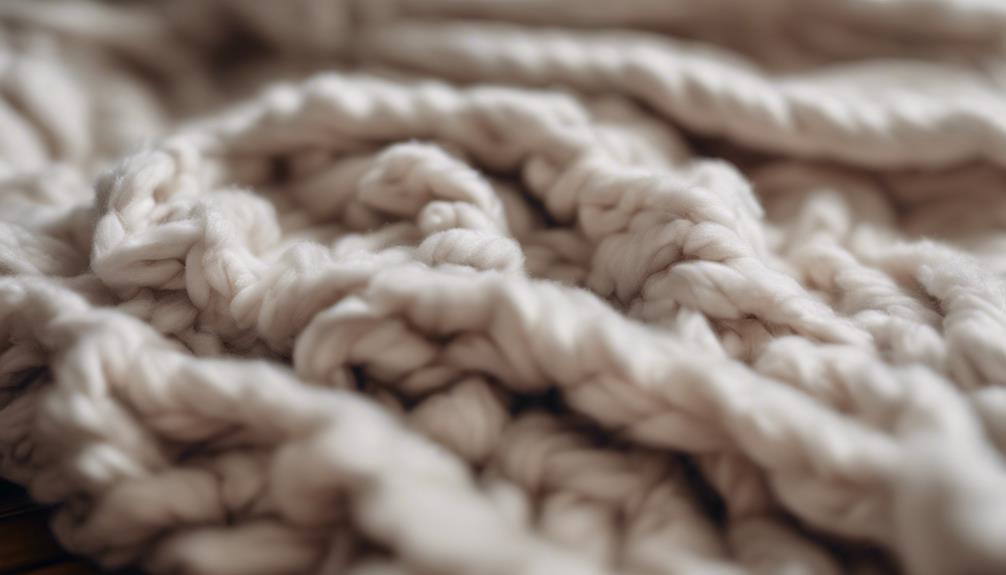
When it comes to throw blankets, cotton stands out for its exceptional softness and breathability, making it a popular choice for cozying up in various settings. The gentle plush feel of cotton provides unmatched comfort, perfect for snuggling on the couch or adding an extra layer of warmth to your bed. Its natural breathability allows for excellent air circulation, keeping you cool during warmer seasons while still offering cozy warmth when temperatures drop.
Cotton throw blankets aren't only soft and comfortable but also versatile and durable. They're ideal for warmer climates due to their ability to regulate temperature effectively. Additionally, cotton is easy to care for, as these blankets can be conveniently machine washed and dried without losing their softness or shape. Many people opt for cotton throw blankets in beach houses for their comfort, low maintenance, and the cozy ambiance they bring to any space.
Wool: Warmth and Versatility
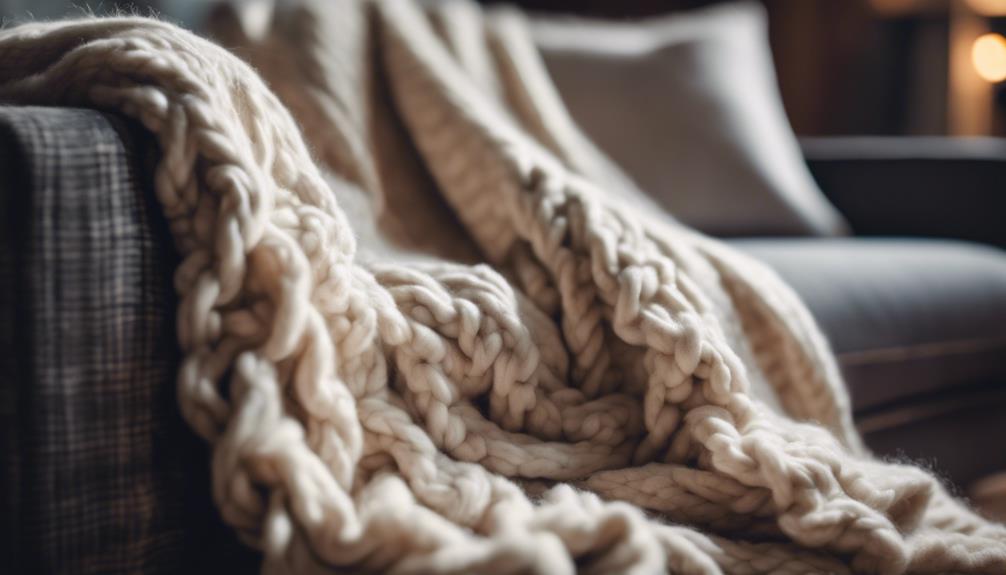
Moving from the softness and breathability of cotton, wool emerges as a top choice for throw blankets, offering exceptional warmth and versatility. Wool, a natural fiber, provides excellent insulation, making it ideal for colder seasons and chilly evenings.
Its breathability allows for air circulation, preventing overheating while keeping you cozy. Wool is known for its durability, ensuring that your throw blanket will last for years to come.
One of wool's remarkable features is its ability to regulate body temperature, keeping you comfortable in various climates. Additionally, wool is moisture-absorbent, meaning it can keep you warm even if it gets damp.
These qualities make wool throw blankets a practical and comfortable choice for anyone looking to stay cozy during the winter months or cool summer nights.
Cashmere: Luxury and Lightweight Warmth
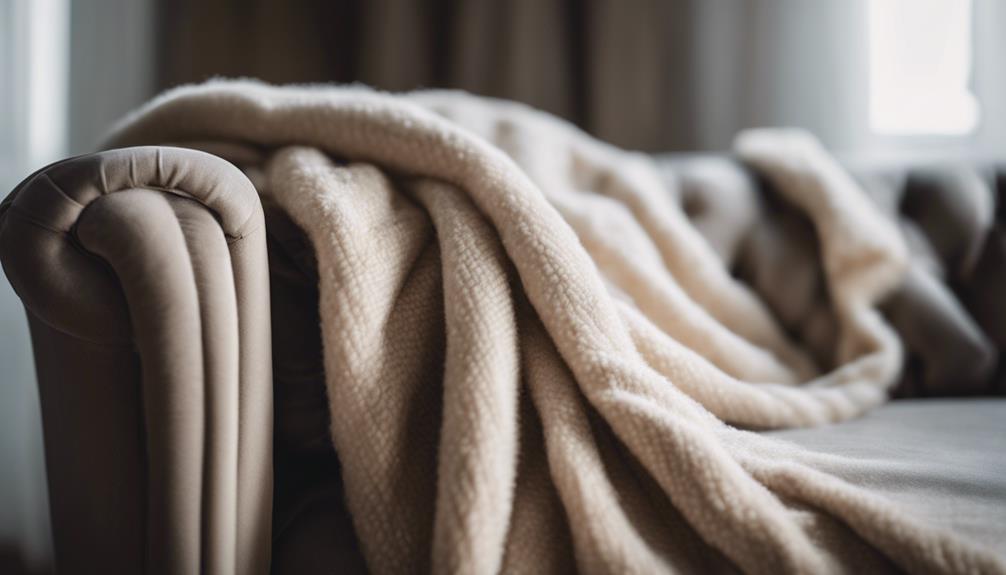
Cashmere blankets, known for their luxurious softness and lightweight warmth, are highly sought after for cozy winter nights. Made from the fine undercoat of cashmere goats, this material isn't only soft but also provides excellent warmth, making it perfect for colder months.
Cashmere is renowned for its ability to hold vibrant and rich hues, adding a touch of luxury to any room. While it may come with a higher price tag, the plush and comfortable feel of cashmere makes it a popular choice for those seeking a cozy and indulgent experience.
Due to its labor-intensive production process, cashmere is considered a finite resource, but its quality and comfort make it a worthwhile investment for those looking for a truly luxurious throw blanket.
If you're in search of a blanket that's both lightweight and incredibly soft, cashmere is the perfect choice for a cozy and stylish addition to your home.
Linen: Moisture-Wicking Properties
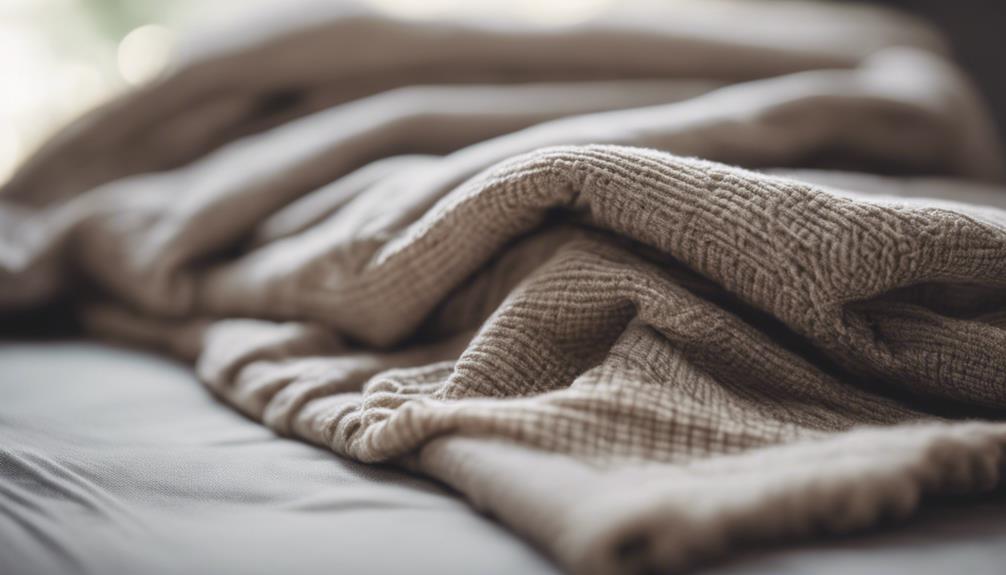
Linen, with its exceptional moisture-wicking properties, stands out as a natural fiber from the flax plant. This fabric is perfect for summer, as it doesn't trap heat, keeping you cool and comfortable. The gentle feel of linen adds a touch of luxury, creating a cozy environment for relaxation. One of its standout features is how easy it is to care for; linen can be conveniently machine washed and dried, saving you time and effort. While linen tends to wrinkle easily, each wash makes it softer, enhancing the comfort it offers over time.
| Advantages | Characteristics |
|---|---|
| Natural fibers | Moisture-wicking properties |
| Summer suitability | Gentle feel |
| Easy care | Cozy environment |
| Soft with washing | Wrinkle easily |
| Comfort over time |
Alpaca: Softness and Silky Warmth
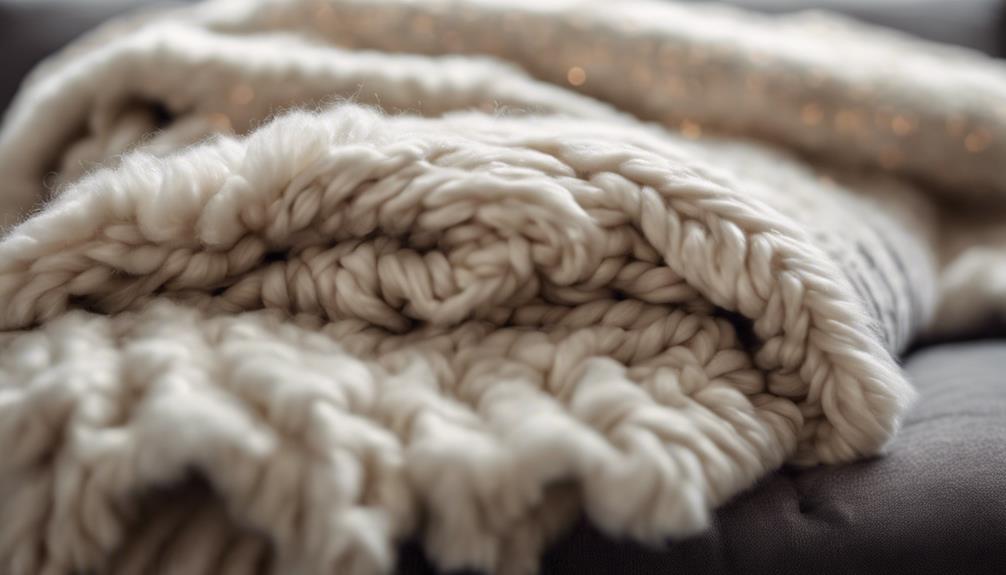
Soft and luxurious, alpaca throw blankets provide guaranteed warmth and comfort for chilly evenings and colder months. These blankets are crafted from the wool fibers of long-haired alpacas, known for their soft and silky texture. Despite being lightweight, alpaca throw blankets excel at providing cozy warmth, making them perfect for snuggling up when the temperature drops. The insulating properties of alpaca wool guarantee that you stay comfortably warm without feeling weighed down.
Not only do alpaca throw blankets offer premium quality, but they're also gentle on the skin, ideal for those with sensitivities. While they require dry-cleaning for maintenance, the luxurious feel and exceptional warmth make them worth the extra care. Whether you're curled up by the fire or looking for a stylish addition to your bedding, alpaca throw blankets are a top choice for individuals seeking both softness and insulation during colder seasons.
Frequently Asked Questions
What Is the Best Fabric for Throws?
When it comes to choosing the best fabric for throws, we consider factors like comfort, durability, and insulation.
Our expertise highlights:
- Cashmere for its luxurious feel
- Cotton for its breathability and longevity
- Fleece for its softness and warmth
- Alternative mink for its affordability and plush appearance
- Berber fleece for its lightweight insulation and coziness.
Each material offers unique benefits, catering to different preferences and needs.
What Is the Most Durable Material for Blankets?
When it comes to finding the most durable material for blankets, wool stands out as a top choice. Its natural resilience and strong fibers make wool blankets a reliable option for long-lasting use.
Wool is flame-resistant and retains its shape even after repeated washes, ensuring longevity. Whether for indoor coziness or outdoor adventures, investing in a wool blanket provides durability and reliability that can withstand the test of time.
What Is the Warmest Throw Blanket Material?
When it comes to the warmest throw blanket material, options like cashmere, wool, and fleece reign supreme. Cashmere stands out for its fine texture, insulation, and softness, offering luxurious warmth.
Wool, a natural insulator, effectively traps air to keep you cozy.
Fleece, known for its lightweight comfort, adds extra warmth.
These materials excel in insulation properties, making them top choices to keep you toasty during colder seasons.
How to Pick Out a Throw Blanket?
When selecting a throw blanket, consider the season, personal preferences, maintenance requirements, room decor, and budget. Look for breathable fabrics like linen or cotton for summer and cozy materials like wool or cashmere for fall and winter.
Opt for soft minky or silk for luxury, or durable fleece for everyday use. Guarantee easy care with machine-washable options or choose dry-clean only fabrics like alpaca for special occasions.
Coordinate the blanket with your room's style while balancing cost and quality.
– What Throw Blanket Material Is the Easiest to Wash?
When it comes to washing a Koolaburra blanket, the easiest material to clean is typically polyester. This material is machine washable and dries quickly, making it a convenient option for busy households. Additionally, polyester is durable and holds up well to frequent washing, ensuring that your Koolaburra blanket stays fresh and cozy for years to come.
Conclusion
To sum up, the best material for throw blankets ultimately depends on personal preference and intended use. Whether you prioritize softness, warmth, luxury, or moisture-wicking properties, there are a variety of materials to choose from.
Cotton offers softness and breathability, wool provides warmth and versatility, cashmere delivers luxury and lightweight warmth, linen boasts moisture-wicking properties, and alpaca offers both softness and silky warmth.
Consider your needs and preferences when selecting the perfect throw blanket material.
